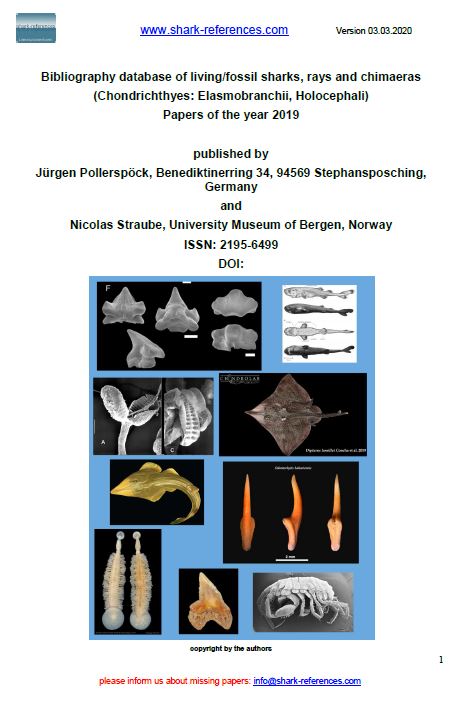Global assessment of manta and devil ray gill plate and meat trade: conservation implications and opportunities. Environmental Biology of Fishes, 108, 611–638
DOI: 10.1007/s10641-024-01636-w
An introduction to one of two special issues on frontiers in elasmobranch biology. Environmental Biology of Fishes, 108(4), 437–439
DOI: 10.1007/s10641-025-01685-9
Modeling predator (Mobula mobular) and prey (Nyctiphanes simplex) distribution in response to ENSO dynamics. Marine Ecology Progress Series, 763, 65–80
DOI: 10.3354/meps14862
Evidence for a fisher-designed solution to manta and devil ray bycatch in tuna fisheries. Conservation Biology, in press
DOI: 10.1111/cobi.70150
Reproductive behavior, seasonality, and distribution of three devil ray species (Mobula mobular, M. thurstoni, and M. munkiana) in the Southern Gulf of California, Mexico. Marine Biology, 171(1), Article 12
DOI: 10.1007/s00227-023-04314-0
Bycatch mitigation from the sky: using helicopter communication for mobulid conservation in tropical tuna fisheries. Frontiers in Marine Science, 11, Article 1303324
DOI: 10.3389/fmars.2024.1303324
Get them off the deck: Straightforward interventions increase post-release survival rates of manta and devil rays in tuna purse seine fisheries. Biological Conservation, 299, Article 110794
DOI: 10.1016/j.biocon.2024.110794
Harnessing stakeholder knowledge for the collaborative development of Mobulid bycatch mitigation strategies in tuna fisheries. ICES Journal of Marine Science, 80(3), 620–634
DOI: 10.1093/icesjms/fsac093
Manta and devil ray aggregations: conservation challenges and developments in the field. Frontiers in Marine Science, 10, Article 1148234
DOI: 10.3389/fmars.2023.1148234

Policy and transparency gaps for oceanic shark and rays in high seas tuna fisheries. Fish and Fisheries, 24(1), 56–70
DOI: 10.1111/faf.12710
Research Priorities to Support Effective Manta and Devil Ray Conservation. Frontiers in Marine Science, 5, Article 314
DOI: 10.3389/fmars.2018.00314

















